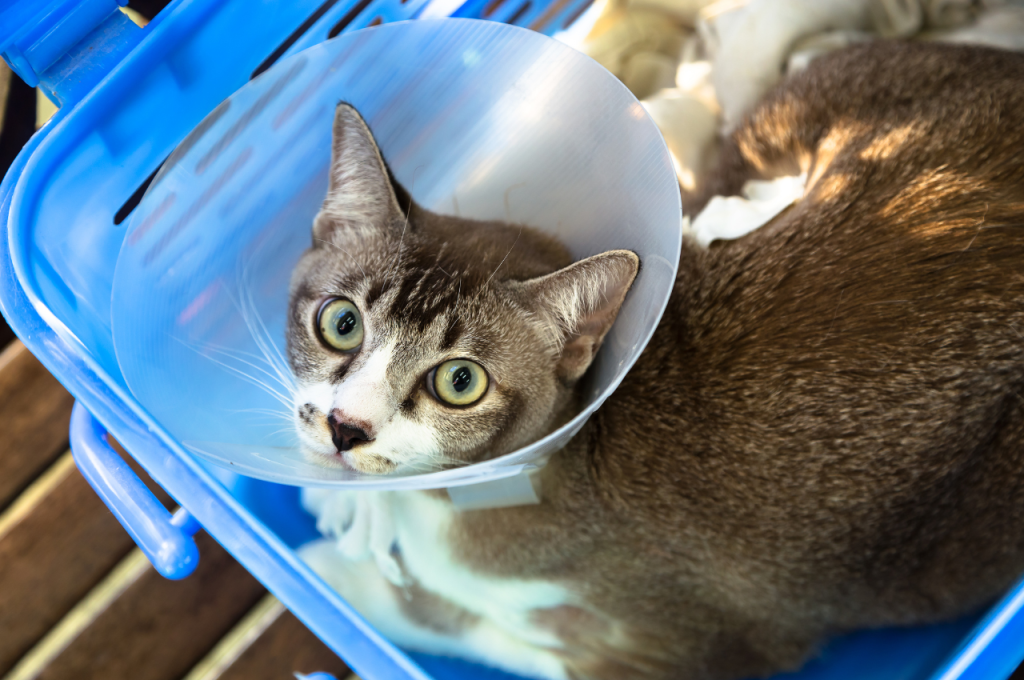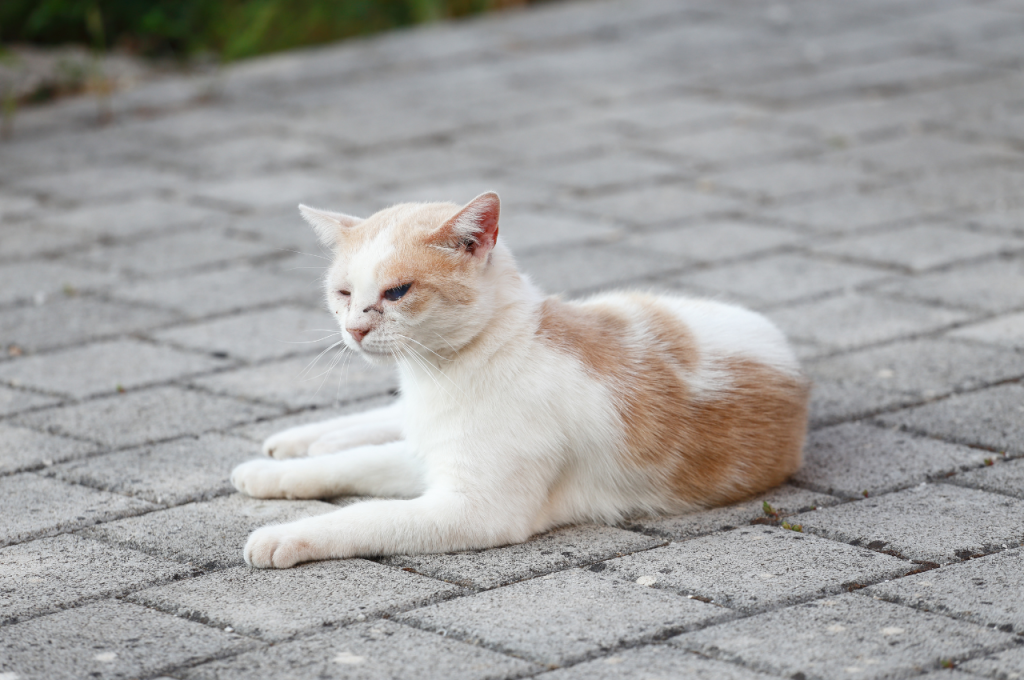When you find a cat injured, the first step is to ensure your safety and the safety of the cat by approaching with caution. Gently assess the situation, avoiding sudden movements that could startle the cat.
Contact a local animal shelter or veterinarian immediately for guidance on how to proceed and provide necessary medical attention for the cat. If safe to do so, carefully place the cat in a secure, padded carrier or box to transport it to a vet. Keep the cat warm and quiet during the process. Acting quickly is crucial to minimize suffering and increase the chances of a full recovery for the injured cat. Avoid giving the cat food or water until it has been evaluated by a professional.
Immediate Steps for an Injured Cat
When you find an injured cat, act quickly but calmly. First, ensure your safety and the cat’s. Approach gently and avoid sudden movements that could startle the cat. If the cat is conscious and able to move, carefully place it in a secure carrier or box lined with a soft blanket to minimize movement. If the cat is unconscious or severely injured, use a towel to gently lift and transport it. Keep the cat warm and quiet during transport. Seek immediate veterinary attention to assess and treat the injuries. Avoid giving food, water, or medication without veterinary advice. Prompt and careful action is crucial for the cat’s recovery.

Assess The Situation
When you find a cat injured, assessing the situation is crucial for ensuring both your safety and the cat’s well-being. Start by observing the cat from a safe distance to gauge its condition and behavior.
Look for visible signs of injury such as bleeding, limping, or unusual posture. Evaluate if the cat is in immediate danger, such as being in a busy road or hazardous area. Approach the cat slowly and calmly to avoid startling it, which could lead to aggressive or defensive behavior. If the cat appears calm and non-aggressive, you can try to gently approach and check for injuries. Make sure to contact a veterinarian or animal shelter promptly for professional help.
Safety First for You and The Cat
- Prioritize safety for both yourself and the injured cat.
- Approach the cat calmly and avoid sudden movements to prevent further distress.
- Use gloves and a blanket to handle the cat and minimize the risk of injury to yourself.
Handling The Injured Cat
If you come across an injured cat, it’s important to approach them cautiously and calmly. Check for any visible wounds and contact your local animal rescue center or veterinarian for assistance. Handle the cat gently and avoid causing any additional harm or stress.
Approaching with Care
When approaching an injured cat, do so with caution and gentleness. Speak calmly to the cat to let it know you are there. Avoid making sudden movements or loud noises. Assess the situation from a safe distance before getting closer.
Securing for Transport
Once you have assessed the cat’s condition, carefully and gently secure it for transport. Use a blanket or towel to wrap the cat, ensuring that it is done so without putting pressure on the injured areas. Handle the cat with utmost care to avoid causing further distress or harm.
Basic First Aid Tips
Basic first aid tips are crucial when you find an injured cat. As a responsible citizen, knowing how to provide immediate care can make a significant difference in the cat’s recovery. Here are some essential first aid tips to help you address common injuries.
Stopping Bleeding
Apply direct pressure to the wound using a clean cloth or gauze to stop the bleeding. If the bleeding is severe, elevate the wound above the heart level to help slow down the flow of blood. Avoid tourniquets as they can cause more harm than good.
Dealing with Fractures
If you suspect a fracture, handle the cat gently and avoid moving the injured limb. Secure the fracture by creating a makeshift splint using a rigid material such as cardboard or a stick. Carefully immobilize the limb and seek veterinary assistance immediately.
When to Seek Professional Help
Discovering an injured cat can be distressing. Seek immediate professional help from a vet to ensure the cat receives prompt medical attention and care. Contact local animal rescue organizations for additional support and guidance in this situation.

Identifying Serious Injuries
Look for signs of severe injuries like bleeding or limping.
- Check for open wounds or fractures.
- Observe labored breathing or excessive drooling.
Finding an Emergency Vet
Locate the nearest emergency veterinary clinic.
- Call ahead to inform them of the situation.
- Transport the injured cat safely to the clinic.
Transporting The Cat Safely
When you find a cat injured, it’s important to handle it with care. Safely transport the cat by gently placing it in a secure carrier or wrapping it in a soft blanket to minimize movement. Seek immediate veterinary assistance to ensure the cat receives proper medical attention. When you find an injured cat, it’s important to transport them safely to the nearest veterinary clinic. Here are some steps you can follow to ensure the safe transportation of the cat.
Preparing a Makeshift Carrier
Before transporting the cat, you need to prepare a makeshift carrier. You can use a cardboard box or a carrier if you have one. If not, you can make a carrier by cutting out holes on the sides of a cardboard box and lining it with a soft towel or blanket. Make sure the carrier is big enough for the cat to move around but not too big that they can hurt themselves by moving too much.
Keeping The Cat Calm
Injured cats can be scared and may try to scratch or bite, so it’s important to keep them calm. You can cover the carrier with a towel or blanket to create a dark and quiet environment. This will help to reduce their stress and keep them calm during transportation. You can also talk to the cat in a soft and soothing voice to reassure them.
Transporting The Cat
When transporting the cat, make sure to hold the carrier securely and keep it level. Avoid sudden movements or loud noises that can startle the cat. If you’re using a car, secure the carrier with a seatbelt or place it in the footwell so that it doesn’t move around. If you’re using public transport, make sure to check their policy on transporting animals and keep the carrier close to you. In conclusion, transporting an injured cat safely requires preparation, patience, and care. By following these steps, you can ensure that the cat is transported to the vet safely and without any further harm.
Preventing Future Injuries
If you find a cat injured, it’s important to approach with caution and avoid causing further harm. Contact a local animal shelter or veterinarian for immediate assistance. Keep the cat calm and comfortable until help arrives to prevent worsening of their injuries.
Safe Outdoor Access
Cats are naturally curious and love to explore their surroundings. As a cat owner, it’s important to provide your furry friend with safe outdoor access. If you allow your cat to roam outside, make sure you have a secure fence or enclosure around your property. This will prevent your cat from wandering off and getting into potentially dangerous situations. Additionally, consider investing in a cat harness or leash for outdoor walks.
Regular Health Check-ups
Regular health check-ups are essential for preventing future injuries in cats. Take your cat to the vet at least once a year for a wellness exam. During the exam, the vet will check your cat’s overall health and look for any signs of illness or injury. Catching health issues early can help prevent future injuries and ensure your cat is healthy and happy.
Proper Nutrition
Proper nutrition is another key factor in preventing future injuries in cats. Make sure your cat is eating a well-balanced diet that provides all the necessary nutrients. Consult with your vet about the best food options for your cat’s age and health needs. Additionally, make sure your cat has access to fresh water at all times.
Regular Exercise
Regular exercise is important for keeping your cat healthy and preventing future injuries. Cats love to play, so provide them with plenty of toys to keep them active and engaged. You can also play with your cat directly by tossing a ball or using a laser pointer. Just make sure to supervise your cat during playtime to prevent accidents.
Cat proof Your Home
Cat-proofing your home is another important step in preventing future injuries. Make sure all toxic substances, such as cleaning products and medications, are stored safely out of your cat’s reach. Additionally, secure any loose wires or cords to prevent your cat from chewing on them. Finally, make sure your cat has a safe and comfortable place to rest, away from any potential hazards. By following these tips, you can help prevent future injuries in your furry friend and ensure they live a healthy and happy life.
Legal and Ethical Considerations
If you come across an injured cat, it’s important to consider the legal and ethical implications. Firstly, ensure the safety of the cat and seek immediate veterinary care. You should also try to locate the cat’s owner or contact animal control for further assistance.

When you come across an injured cat, it’s essential to act fast and get them the medical attention they need. But before you do, it’s crucial to understand the legal and ethical considerations that come with helping a stray or feral cat.
Reporting Stray or Feral Injuries
If you find a stray or feral cat that’s injured, it’s your responsibility to report it to the appropriate authorities. This may include contacting your local animal control agency or animal shelter. They can help you determine the best course of action and ensure that the cat receives the medical attention they need.
Understanding Your Responsibilities
It’s important to understand your responsibilities when it comes to helping an injured cat. In some cases, you may be liable for any injuries or damages that occur as a result of your actions. It’s also important to consider the cat’s well-being and ensure that they receive proper medical care.
In addition to legal considerations, there are also ethical considerations to keep in mind. It’s important to consider the cat’s quality of life and whether or not they can be rehabilitated. If the cat is suffering from a severe injury or illness, it may be more humane to euthanize them. Overall, it’s important to approach the situation with compassion and care. By understanding your legal and ethical responsibilities, you can ensure that the injured cat receives the appropriate care and attention they need.
Conclusion
In times of finding an injured cat, quick action is crucial. Contact local animal services for help. Remember, kindness and care go a long way in aiding a distressed feline. By following proper steps, you can make a difference and help save a precious life.
